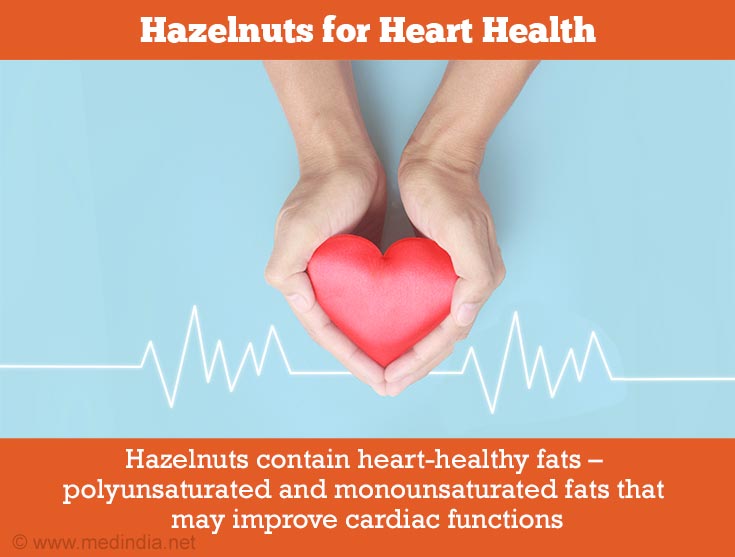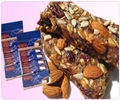- Magnesium: Fact Sheet for Health Professionals - (https://ods.od.nih.gov/factsheets/Magnesium-HealthProfessional/)
- Substituting dietary monounsaturated fat for saturated fat is associated with increased daily physical activity and resting energy expenditure and with changes in mood. - (https://www.ncbi.nlm.nih.gov/pubmed/23446891)
What are Hazelnuts?
Hazelnuts are the nuts that grow on hazel trees and shrubs. There are several cultivars of the hazel but the most common are the corylus avellana (larger-nut size) European hazelnuts, corylus americana and Corylus comuta or beaked hazelnuts.
The Hazelnut has a delicate nutty flavor with a mildly bitter skin. These nuts pair very well with chocolate which is why chocolate hazelnut spreads have grown in popularity in the last couple of decades.
Health Benefits of Hazelnuts
- Improve Heart Health: According to the USDA, consuming just 1.5 ounces of nuts such as hazelnuts can help to reduce an individual’s risk of cardiovascular disease. Hazelnuts contain polyunsaturated and monounsaturated fats, which are, heart-healthy fats that improve cardiac function. They are also high in oleic acid, which lowers bad cholesterol levels while raising the level of good cholesterol in the body.

- Reduce Risk of Neural Tube Birth Defects: Neural Tube Birth Defects (NTDs) are among the most common birth defects as they affect over 300,000 babies globally in a year. The neural tube develops during the 3rd week of pregnancy and it ultimately forms the baby’s brain and spinal cord. When this tube does not close completely as it should, a small opening is created in the spinal cord or brain and this is how a neural tube birth defect develops.
Making sure that you meet your daily requirement for folic acid will reduce the risk of neural tube defects by 70%. Since the neural tube develops very early in pregnancy when the mother might not even be aware that she is pregnant, doctors recommend that women who are trying to get pregnant should get 400 mcg of folic acid daily. A single cup of hazelnuts provides over 150 mcg of folate, which would go a long way in ensuring that you meet your daily requirement for this vitamin. - Help Reduce Depression: Researchers have recently found a connection between low folic acid levels and depression. Scientists are still not completely sure of the role that folic acid plays in the occurrence of depression, but several studies show that a deficiency of folic acid has been linked to a poor response to anti-depressant medications. You can discuss folic acid supplements with your doctor if you have been prescribed SSRIs (serotonin reuptake inhibitors).
- Help Reduce Urinary Tract Infection (UTI): A urinary tract infection occurs when bacteria enter the urinary tract through the urethra. These bacteria then multiply rapidly causing symptoms such as cloudy or bloody urine, pain while urinating and the frequent need to urinate. The most common cause of urinary tract infections is the bacteria called E.coli. Hazelnuts contain several phytochemicals including proanthocyanidins. These proanthocyanidins have been proved to be useful in preventing UTIs and researchers believe that this is because proanthocyanidins prevent the E.coli bacteria from sticking to a woman’s urinary tract lining. Cranberries too are a good source of these beneficial plant compounds and so it would be wise to include cranberries and hazelnuts in your diet in order to prevent or help treat a UTI.

- Improve Bone Health: Adults have approximately 25 g of magnesium in their bodies and about 60% of this mineral is in their bones. Magnesium plays an important role in the structural development and maintenance of bone. There are various recent studies on the effects of magnesium intake on bone health. One study found that postmenopausal women who consumed 290 mg of magnesium per day for a period of just one month experienced less bone loss as compared to those who were given a placebo. This indicates that increasing magnesium intake can increase bone density in postmenopausal women. A higher bone density would also reduce a person’s risk of bone fractures. The RDA (Recommended Daily Allowance) of magnesium is between 300 and 400 mg as it varies depending on the individual’s age and sex. 100 gms of hazelnuts contains 163 mg of magnesium which amounts to approximately half of a person’s requirements.
Hazelnut Recipes
Hazelnuts are very versatile and can be used in savory sauces and delicious desserts. If you want to include hazelnuts in your diet but you don’t have the time to cook or bake, you can make a hazelnut spread and have it on a slice of toast for breakfast every day. You don’t really need a hazelnut-spread recipe, you can just toast a cup of hazelnuts and puree it along with half a cup of sweetened condensed milk, half a cup of grated chocolate and a few pinches of salt.
Some of the most popular hazelnut recipes include hazelnut tarts, hazelnut biscuits, hazelnut cake and hazelnut cookies. The one thing that all of these recipes have in common (besides hazelnuts) is that all of them require very little preparation time! Here is a simple recipe for hazelnut cookies:
Ingredients
- 1 cup all-purpose flour
- ½ cup hazelnuts
- ¼ cup sugar
- ½ cup unsalted butter
- ¼ teaspoon vanilla extract
- ½ cup grated chocolate or ¼ cup of hazelnut chocolate spread
- 2 pinches of salt
Method
- Preheat your oven to 375 degrees F (190 degrees C).
- Toast the hazelnuts and then rub them in a towel to remove the loosened skins. Keep the nuts aside to cool. Once they have cooled, grind them in a small mixer bowl until you have a fine powder.
- In a large bowl, mix together the ground hazelnuts, the flour, the salt, the sugar and the vanilla extract. Add the butter (while it is still cold) and mix thoroughly until the dough starts to forms a ball. Divide the dough into 2 equal halves.
- Mix one tablespoon of flour and ½ a tablespoon of sugar and dust your work surface with this mixture. Roll one half of the dough into a log approximately 1 inch in width and 10 inches in length.
- Dust your work surface once again with one tablespoon of flour and ½ a tablespoon of sugar and roll the second log.
- Wrap each log separately in plastic wrap and refrigerate them for an hour.
- Cut the logs into ½ inch slices and arrange them on baking sheets leaving about 2 inches between each piece.
- Place the sheets on the middle rack of your oven and bake them for about 10-15 minutes until the bottom of each cookie turns a golden color.
- Remove them from the oven and dust them with the grated chocolate or place a dollop of hazelnut spread over each one and set them aside to cool.
Hazelnut milk, almond milk and other non-dairy kinds of milk have been gaining popularity as many people are allergic to the lactose sugar found in dairy products. Although it’s not very common, some people are allergic to hazelnuts.
People who suffer from hay fever or tree pollen allergy are more likely to suffer from a hazelnut allergy. The most common hazelnut allergy symptoms include itching or burning in the mouth directly after eating hazelnuts or products containing hazelnuts. A more severe allergic reaction would cause hives, difficulty breathing or even anaphylactic shock. Seek immediate medical attention at the first sign of an allergic reaction.







